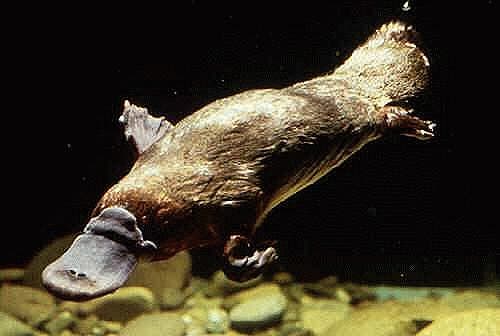Woes seem to keep piling onto poor Australia: new research shows that the continent’s iconic and unique platypus is at risk of extinction.

The intense and prolonged drought plaguing the land down under is placing enormous strain on the platypus, a new study reports. The rivers and waterways that make up this species’ natural habitat are drying up, leaving the animals stranded, the researchers explain.
Going through a lot
Although not much is known about their natural distribution or abundance (the species is nocturnal and quite shy), platypuses were once considered widespread throughout eastern Australia and Tasmania. However, new research led by members from the University of New South Wales (UNSW) in collaboration with the Taronga Conservation Society showcases that the species is in dire need of help. It is experiencing heavy pressure from both natural and man-made factors including severe drought, water resource development, land clearing, and changing climate. The team warns that action is urgently needed to save the platypus from potential extinction.
Lead author Dr Gilad Bino, a researcher at the UNSW Centre for Ecosystem Science, said action must be taken now to prevent the platypus from disappearing from our waterways.
“There is an urgent need for a national risk assessment for the platypus to assess its conservation status, evaluate risks and impacts, and prioritise management in order to minimise any risk of extinction,” says Dr. Bino.
“These dangers further expose the platypus to even worse local extinctions with no capacity to repopulate areas.”
The species is most impacted by current climate conditions and habitat destruction through land clearing and fragmentation from dams and weirs, the team reports. They further explain that platypus numbers have almost halved since European colonists first settled Australia, with local populations going extinct across 40% of the species’ range. Considering the current drought and the likely increase in drought frequency and duration in the future (due to climate change), things are only going to get worse for the platypus.
While the International Union for Conservation of Nature (IUCN) recently downgraded the platypus’ conservation status to “Near Threatened”, it remains entirely unlisted under most local jurisdictions except in South Australia, where it is considered endangered.
Apart from climate change and its associated extremes in weather and precipitation patterns, the chief threat to platypus’ long-term viability is humans, the team explains. The animals live or have traditionally lived in areas that are still experiencing extensive human development.
“These include dams that stop their movements, agriculture which can destroy their burrows, fishing gear and yabby traps which can drown them and invasive foxes which can kill them,” says study co-author Professor Richard Kingsford, also from the UNSW Sydney Centre for Ecosystem Science.
Luckily for the strange mammal, it’s not yet extinct. If preventative measures are taken now, says Professor Brendan Wintle, a study co-author from The University of Melbourne, we can turn their fortunes around. He explains that mitigating or stopping new threats (such as new dams) from impacting the species’ range can help “even a presumed ‘safe’ species such as the platypus”.
Still, the paper highlights the “urgent need” for national conservation efforts focusing on the platypus. However, they add that many other native Australian species are also threatened with extinction.
“[Preventive measures are] likely to be more effective than waiting for the risk of extinction to increase and possible failure,” Prof Wintle said. “We should learn from the peril facing the koala to understand what happens when we ignore the warning signs.”
Such measures include “increasing monitoring, tracking trends, mitigating threats, and protecting and improving management of freshwater habitats.”
Meanwhile, the team plans to continue researching the ecology and possible conservation practices for the platypus to help guide effective policy and management programs in the future.
The paper “A stitch in time – Synergistic impacts to platypus metapopulation extinction risk” has been published in the journal Biological Conservation.









